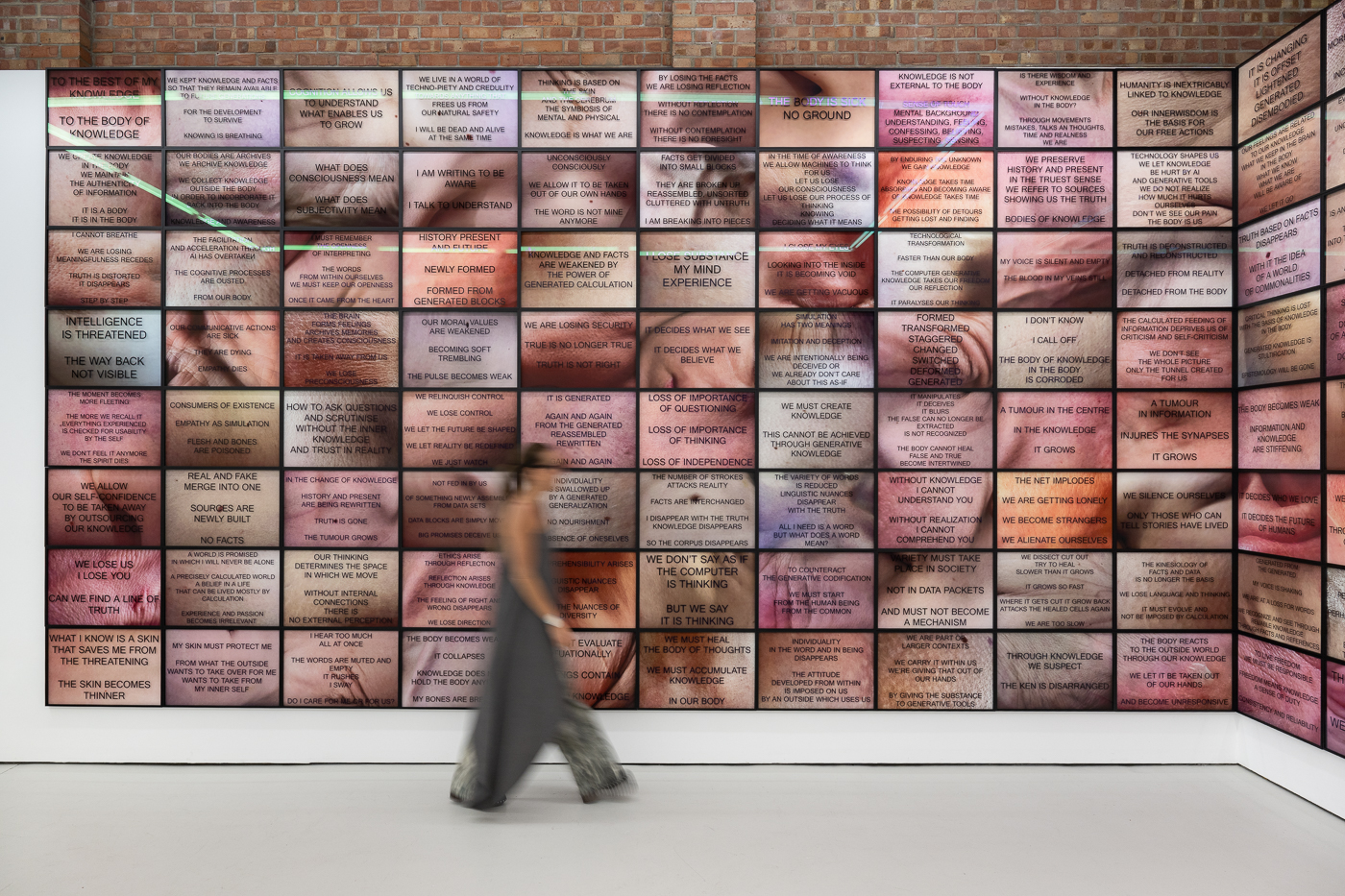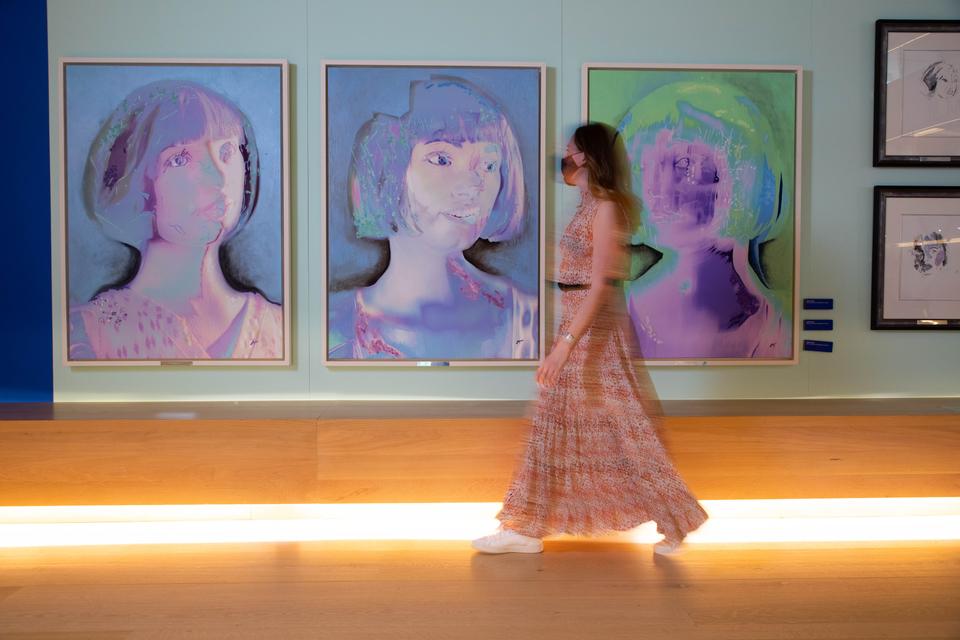TRT World has written an article on Ai-Da Robot’s history and her Design Museum exhibition.
Ai-Da: An ultra-realistic robot artist gets her day in the spotlight
A brainchild of art dealer Aidan Meller of Oxford, UK, Ai-Da is the product of a communal effort and has already sold paintings to people who may possibly be amused by owning art made by a machine.
Ai-Da is “the world’s first ultra-realistic robot artist” who is able to draw and paint, and she is having an exhibition at London’s Design Museum until August 31, 2021. The Design Museum poses the question whether “artworks produced by machines can indeed be called ‘art’” and in the case of Ai-Da, there are plenty of people who have put in their efforts to make us believe so.
An art dealer in Oxford, UK over the past two decades, Aidan Meller says he is the creator of Ai-Da, with help from many sources. In an email interview with TRT World, Miller writes “I was always interested in what makes an artist’s work special, what makes it stand out. Looking at the history of art, it became apparent it was the artists who caught the zeitgeist of their times that really connected with people.”
Meller goes on to say: “Looking at our time now, with it’s rapidly changing technological landscape, I wondered if a humanoid could become an artist, and address those challenging dilemmas of our current and future lives.”
So he set out to work, contacting universities and trying to develop an artificial intelligence that could produce artwork. While Meller has chosen to leave unanswered TRT World’s question about whether Ai-Da can pass the Turing test, that is, prove indistinguishable from a human in conversation, according to the Design Museum, “Ai-Da can both draw and engage in lively discussion.”
Meller calls Ai-Da “a composite persona, with many different aspects, including a variety of AI computer programmes designed by university students and professors from Oxford, Leeds and Birmingham universities.”
The news release further explains “She was devised by Gallery Director Aidan Meller, with academic exploration by Researcher Lucy Seal, and she was made by Engineered Arts Ltd, and PhD students from the University of Oxford. The programming team are pioneering techniques in AI art to produce remarkable reflections on the use of AI and new technologies today.”
The Design Museum is more specific into who helped Ai-Da come to life: “Her robotic arm, developed by Salah Al Abd and Ziad Abass [undergraduate students at University of Leeds School of Electronic and Electrical Engineering], enables her to hold a pencil, and her silicone face, designed by researcher Lucy Seal and digital artist Alex Kafousssias and 3D designer Tim Milward, makes it appear as though she is ‘alive’.”
“Ai-Da is a life-size humanoid robot named after Ada Lovelace, the pioneering female scientist and mathematician,” the news release explains. “Completed in 2019, Ai-Da is designed with the capability to create art and uses AI algorithms to produce works that comment on the current and future uses of artificial intelligence.”
Meller also did not answer questions regarding Ai-Da’s artworks’ estimated worth. Asking whether Ai-Da’s work is collectible or for sale, TRT World was told Meller “didn’t feel able to answer in this context, as the emphasis of this exhibition is on Ai-Da as a project rather than the commercial value of her art work.” That may have been the case for this Design Museum exhibition, but her works have been sold in the past.
For example, in a June 2019 article in Artnet, journalist Naomi Rea poses the same question. She writes that “artworks attributed to the machine have already brought in more than $1 million. Much of the earnings, Meller says, has gone back into the funding of the project, although he has no doubt also taken a cut. Wise to the direction of my questions, the dealer declined to specify a price range for individual works, nor a ballpark of the number of works sold. Perhaps he senses an impending expiration date for the novelty.”
Meller doesn’t provide much detail when he talks about sources for Ai-Da’s inspiration, other than the obvious Ada Lovelace reference: “Ai-Da has many different inspirations. In particular she is inspired by the writers, artists and thinkers of the early twentieth century, another turbulent period in history.”
The humanoid robot is, according to Meller, still developing her talent and will continue to experiment with her art: “Ai-Da’s future will see her continuing to experiment and develop her artistic practice. Who knows what exciting directions this might take her.”


